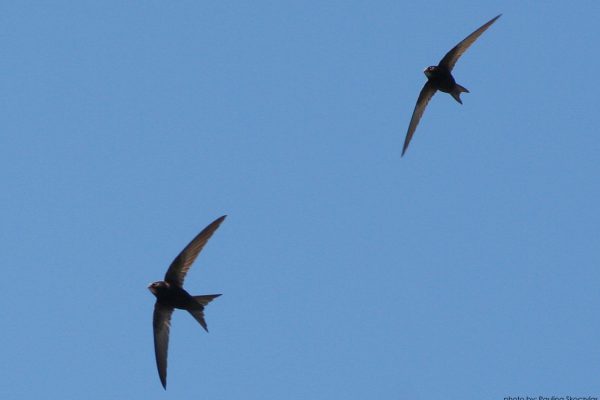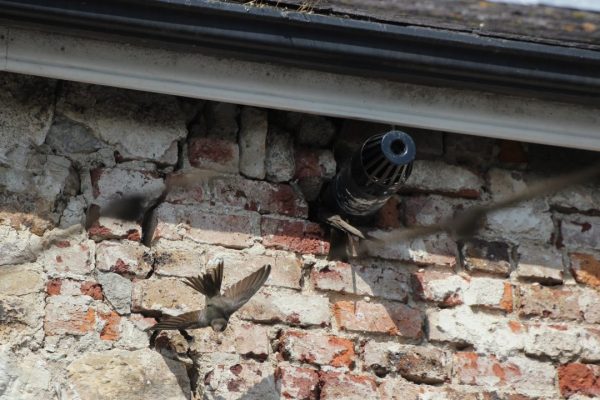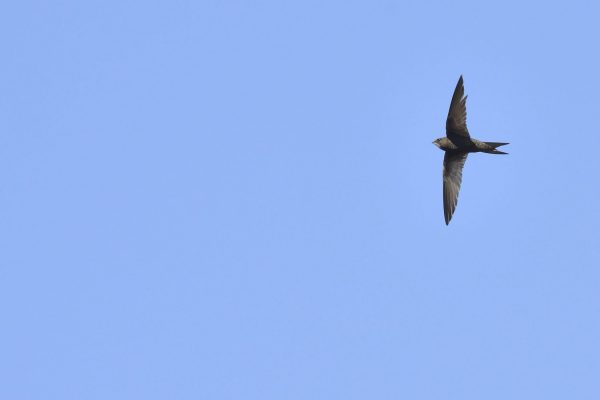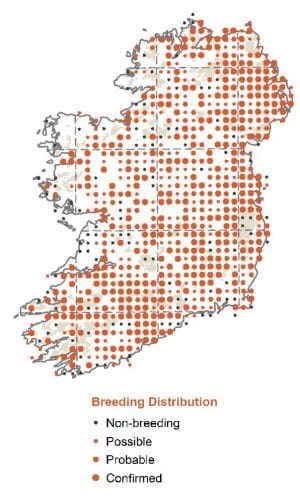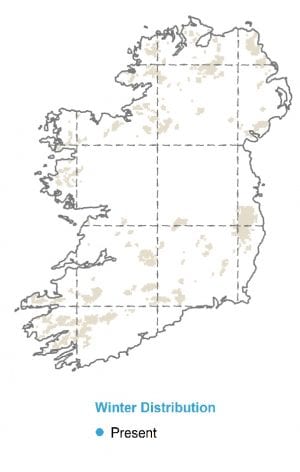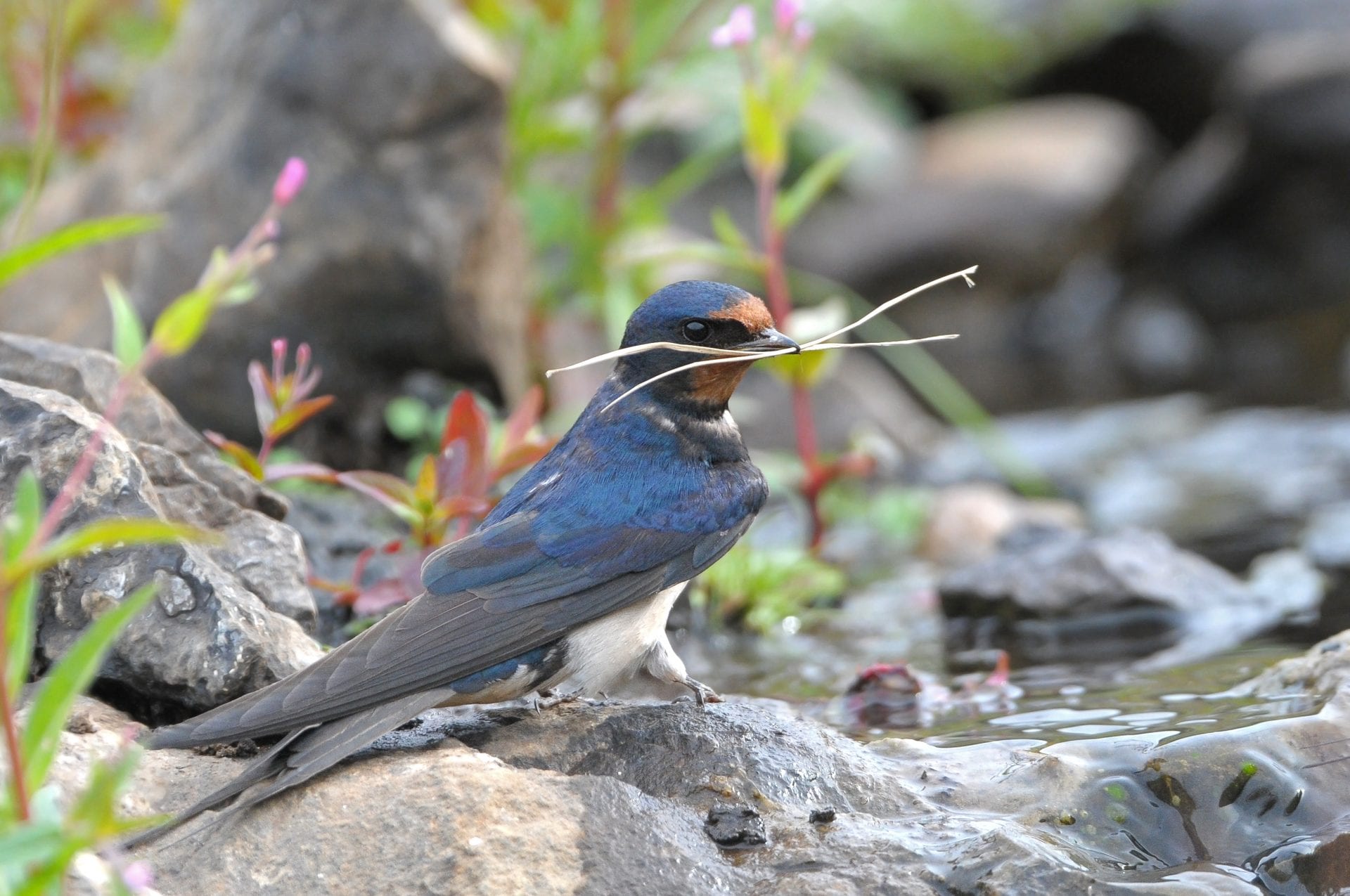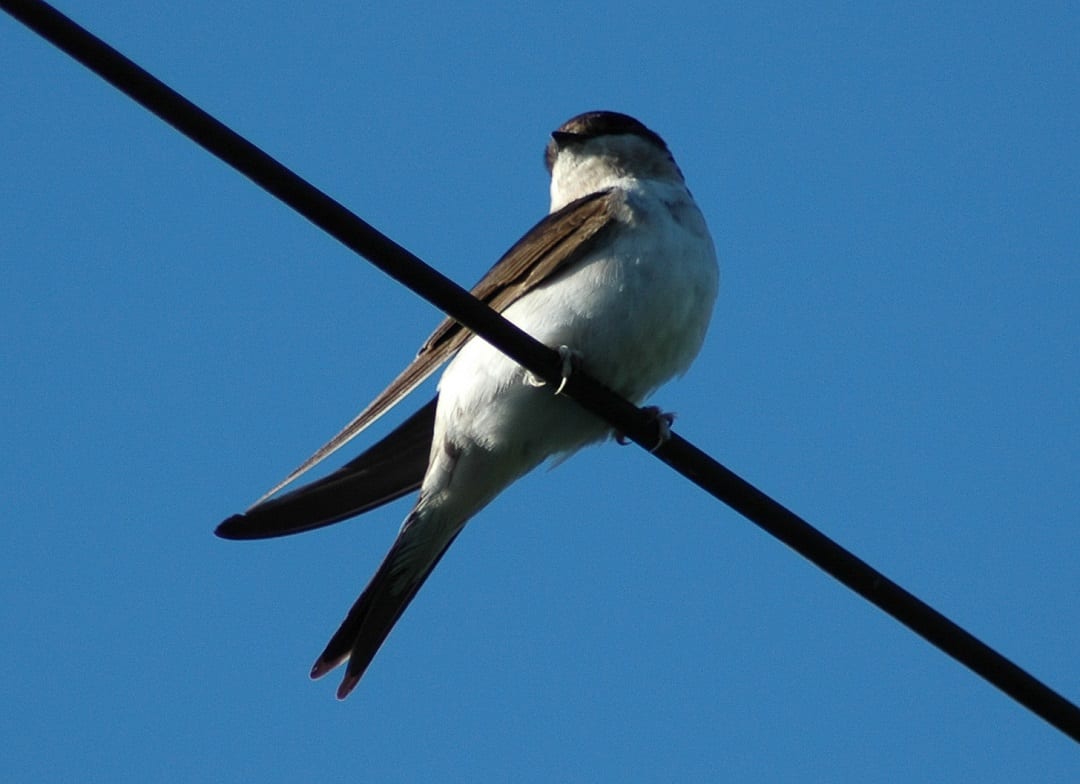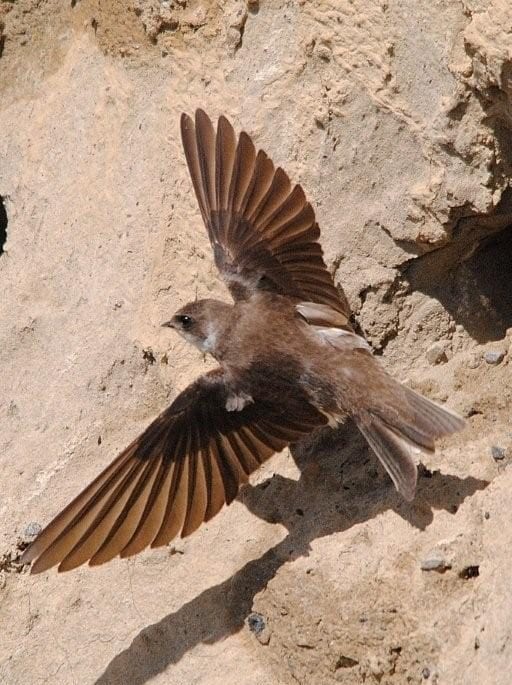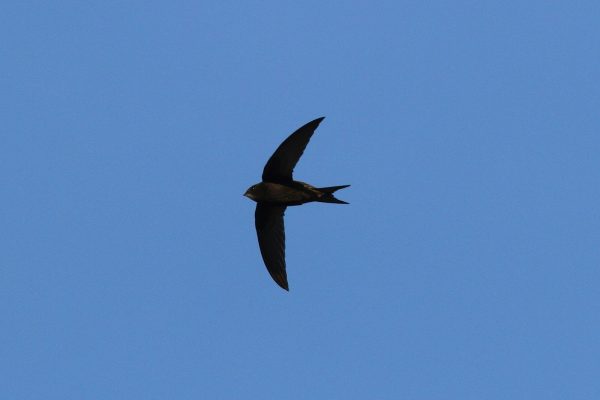
Swift
| Irish Name: | Gabhlán gaoithe |
| Scientific name: | Apus apus |
| Bird Family: | Swift |
red
Conservation status
Conservation status
Status
Widespread though declining summer visitor throughout Ireland from May to early September.
Identification
About the same size as a Swallow, but all dark. Spends virtually all of its life airborne and never seen resting on wires, as Swallows and Martins frequently do. The weak and small feet of a Swift only allow it to cling to vertical surfaces or shuffle akwardly on the ground (at the nest). In flight, has a distinctive shape with scythe shaped wings held straight out from the body. One of the fastest flying birds in Ireland.
Voice
Most frequently heard is a high-pitched scream "srrrriii". Often given by pairs in high speed chases.
Diet
Feeds exclusively on various invertebrates (midges, flies, spiders) caught in flight
Breeding
Breeds throughout Ireland, usually in small recesses in buildings, both occupied and derelict. Less frequently in holes in trees or caves in uplands or coastal areas.
Wintering
Winters in tropical Africa. Migrants arrive from the end of April onwards and most will have departed by mid-August. A few individuals can usually be seen up until the start of September.
Monitored by
Blog posts about this bird
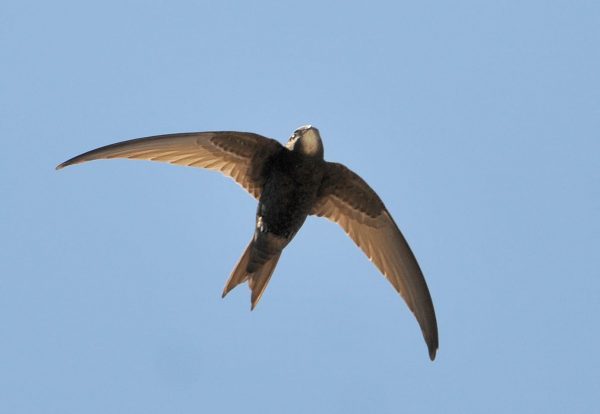
World Migratory Bird Day campaign underscores the importance of insects and shines a light on declines
Saturday, October 12th marks World Migratory Bird Day. By focusing their 2024 campaign on insects, organisers hope to underscore their importance to migratory birds while also highlighting wider concerns related to decreasing insect populations.
The importance of insects for migratory birds and all life
We often hone in on the long distances travelled by migratory bird species and rightly so. It is extremely impressive that such small creatures can fly thousands of miles, often in challenging weather conditions, and arrive at their destination safely. However, many birds are reliant on other species to make this journey possible. Indeed, it is the existence of other winged creatures – insect populations – that gives them the fuel to keep on going.
Insects are essential food sources for many migratory birds on their long journeys, and some species will time their migrations to align with periods of insect abundance in their stopover locations. Once they replenish their energy reserves, they can resume their journey.
Species such as warblers, flycatchers, swallows, and swifts are particularly reliant on insects. However, many other bird species such as ducks and shorebirds depend on insects during migration and at other stages in their lifecycle, in particular for raising their young before they are able to fly.
On a wider level, insects provide critical ecosystem services that support all life on this planet. They pollinate crops which supports food production, decompose waste materials and contribute to nutrient cycling and soil fertility, and control pests. Their decline has a direct impact on ecosystem functioning.
Insect Declines
Many people will recall how, not so long ago, a large number of dead insects would be found on a car windscreen and bumper following a drive through the countryside. Those too young to have experienced this period of insect abundance are likely to have heard this anecdote from friends and family. In fact, it is such a widely shared observation that it has become known to entomologists as the “the windshield phenomenon”.
Anecdotally, insects have experienced declines, but what does the science say? Unfortunately, invertebrates including insects have been historically understudied and many gaps in the data still remain. Additionally, where assessments have taken place, they have predominantly been in regions that can afford to fund insect science such as Europe and North America. Some of the most biodiverse regions on the planet have had little to no assessments of their insect populations. This lack of data on the species we know, coupled with the fact that millions of insect species are yet to be discovered, suggests that we don’t have the full picture on the scale of global insect decline.
However, in recent decades, efforts to better understand how insects are faring have expanded with pollinating insects such as bees, hoverflies, butterflies and moths in particular becoming the subject of an increased amount of research. From what we know so far, the situation is clear: they are in peril.
For example, the International Union for Conservation of Nature (IUCN) European Red List of Bees shows that 9% of the 1,965 species of bee in Europe are Threatened with extinction mainly due to habitat loss as a result of agriculture intensification, urban development, increased frequency of fires and climate change. A further 5.2% are considered Near Threatened. However, a staggering 56.7% of these species were classified as “Data Deficient” meaning that there is not enough data to evaluate their risk of extinction.
Over 37% of the European hoverfly species assessed in the IUCN European Red List of Hoverflies were considered Threatened, with a further 6.9% considered Near Threatened. One species that previously occurred in Sweden, Finland and possibly Poland, was classified as Regionally Extinct.
As outlined in their Red List Strategic Plan (2021-2030), the IUCN is working to substantially increase the number of wild species assessed, particularly plants, invertebrates and fungi.
Insects in Ireland
In Ireland, the National Biodiversity Data Centre is doing trojan work to improve our knowledge of insect populations in Ireland, particularly via monitoring schemes for butterflies, bumblebees and more recently, dragonflies.
The Irish Butterfly Monitoring Scheme, established by the Data Centre in 2008, is Ireland’s longest-running citizen science insect monitoring scheme. By tracking changes in 15 species, we now know that overall butterfly populations have declined by 55% since 2008.
Meanwhile, the All-Ireland Bumblebee Monitoring Scheme has been tracking changes in the populations of the eight most common bumblebee species since 2012. The current overall trend from 2012-2023 is a year-on-year decline of 3.3%.
Celebrate World Migratory Bird Day
World Migratory Bird Day is an annual global campaign dedicated to raising awareness of migratory birds and the need for international cooperation to conserve them. It is organised by a collaborative partnership among two UN treaties – the Convention on Migratory Species (CMS) and the African-Eurasian Migratory Waterbird Agreement (AEWA) – and the non-profit organisation, Environment for the Americas (EFTA).
The return of winter migrants to Ireland brings a seasonal spectacle as thousands of birds, such as Whooper Swans, Greenland White-fronted Geese and Greylag Geese arrive from colder northern regions. This annual migration highlights Ireland's role as a vital sanctuary, providing essential habitats for these species during the harsher winter months. Keep an eye out for some of these species this World Migratory Bird Day but be sure to keep your distance to avoid harmful disturbance.
This year’s insect theme may also encourage you to play your part for Ireland’s insect populations. One way you can do this is by getting involved in the National Biodiversity Data Centre’s citizen science initiatives. Find out more here.
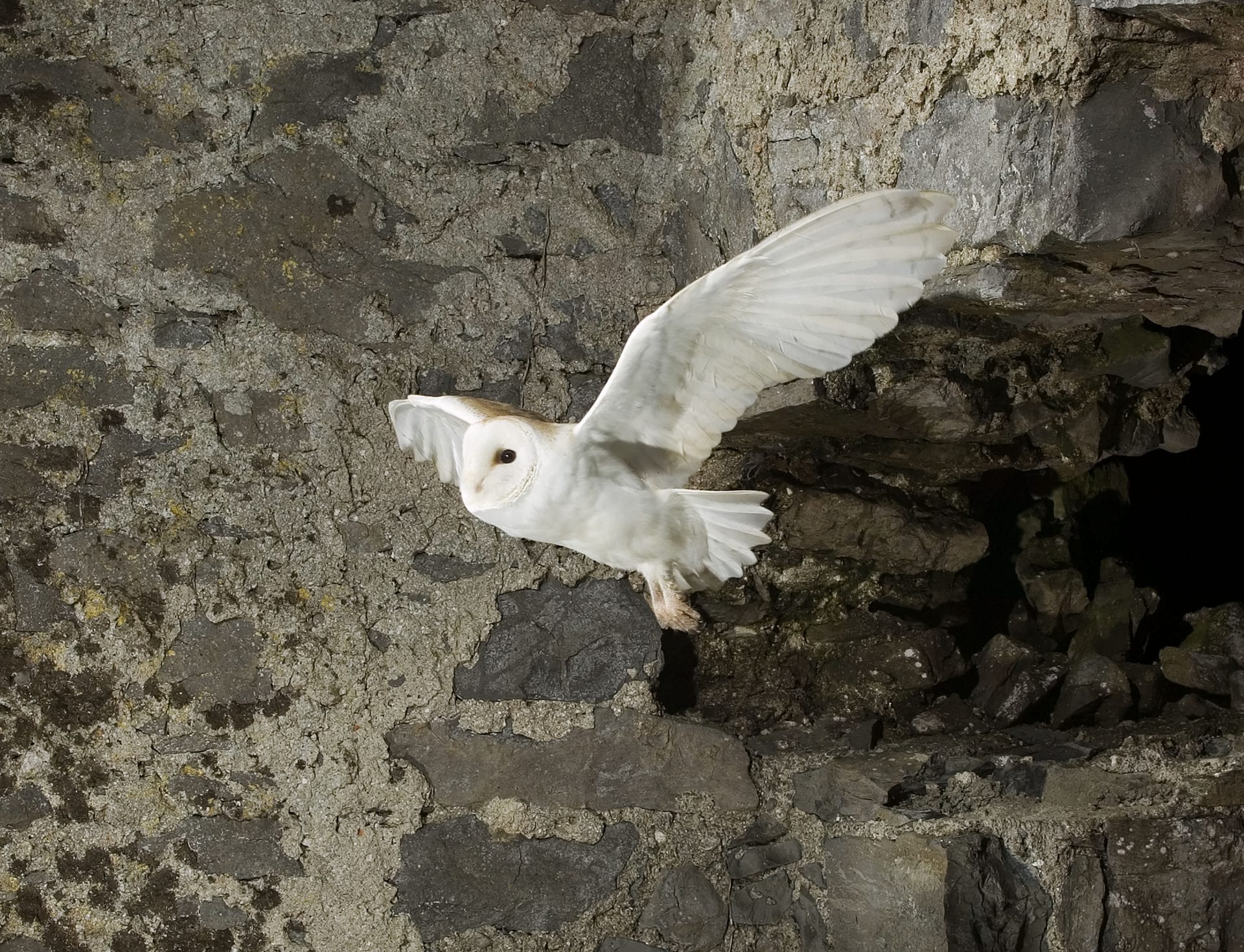
Celebrate Heritage Week 2024 at your local BirdWatch Ireland event
The theme of this year’s National Heritage Week, “Connections, Routes and Networks”, invites people across the country to explore the ways we are connected to each other through physical or cultural ties. Running from Saturday, August 17th until Sunday, August 25th, the week offers an array of free events nationwide.
Birds give us the perfect opportunity to reflect on the interconnected nature of all things. Migratory species, including Greenland White-fronted Geese, Whooper Swans and other species that will soon migrate to Ireland for winter, traverse the globe, linking the people and countries along their migration routes. Their existence fosters cooperation between nations, as the conservation of migratory birds relies on international collaboration.
Just as birds are reliant on human cooperation and connection to thrive, our own well-being is very much dependent on birds. We rely on birds for vital services including pollination and insect control. Moreover, birds have inspired humans for centuries, leading to the creation of some of our most cherished art and literature.
This National Heritage Week, celebrate birds and the many ways they connect us by attending one of the BirdWatch Ireland events organised by BirdWatch Ireland staff and/ or local branches. Find one near you using the list below. Find the contact details for your local BirdWatch Ireland branch here.
Cavan
BirdWatch Ireland’s Barn Owl Research Officer Alan McCarthy will be giving a talk about Barn Owls in Cavan on Wednesday, August 21st at 7.30 p.m. The talk will take place in the Boardroom (top floor) of the Bridge Street Centre, Cavan Town.
On Thursday, August 22nd from 7 p.m. until 8 p.m., the BirdWatch Ireland Cavan Branch will hold a birdwatching walk and talk. This will take place in the car park for Turbet Island, Belturbet (same meetup point as for the Dawn Chorus Event in Belturbet). The talk will be delivered by Derek Belton and will mention some of the birds you are likely to see on Turbet Island with a particular focus on birds associated with the water like the Grey Heron, Grey Wagtail, Kingfisher, Mute Swan and Great Crested Grebe.
Meanwhile, on Friday, August 23rd, join Annie Birtwistle for a free Swift Talk in Bailieborough Business Centre, Co Cavan at 7.30 p.m. To celebrate Heritage Week, we will be talking about these amazing birds, the results of the 2024 Cavan survey and what can be done to help safeguard our Swift population. For more info, email cavanheritage@cavancoco.ie.
This talk is funded by Cavan County Council through LBAF @NPWS
Cork (West)
The BirdWatch Ireland West Cork branch will hold a Family Event at Rosscarbery on Sunday, August 18th between 2.30 p.m. and 4.30 p.m. Find out more about the birds that use the estuary on migration and during the winter.
Meet on the causeway opposite the Celtic Ross Hotel, Rosscarbery (GPS 51.575134, -9.029499). Contact Nicholas Mitchell for more information at treasurer@birdwatchirelandwestcork.ie/ 087 121 5256.
Donegal
The BirdWatch Ireland Donegal branch will hold an outing on Saturday, August 17th to Blanket Nook Lake. They will meet in the car park at Kernan’s Diner at Newtown Cunningham at 10 a.m. and then continue on to the lake for a birding walk of 2/ 3 hours duration.
Dublin South
Ahead of National Heritage Week, the BirdWatch Ireland South Dublin branch will run an outing to Sandymount Strand, Dublin on Thursday, August 15th. It is hoped that attendees will have the chance to observe the arrival of the annual late summer tern roost at Sandymount Strand. Wellington boots or similar are advised.
Meet in Sandymount Strand, car park 3 on Strand Road. See here for a map and more information on Sandymount Strand. The car park is at Flag F on the map.
Galway
Celebrate Galway City's Heritage with a talk about Swifts and the 2024 Galway City Swift Survey. Join BirdWatch Ireland staff on Tuesday, August 20th at 6 p.m. in Galway City Library. For more info, email parks.department@galwaycity.ie.
This talk is funded by Galway City Council LBAF.
Kildare
The BirdWatch Ireland Kildare branch will host an outing to Sandymount Strand on Thursday, August 22nd to watch thousands of Common and Arctic Terns gather to roost. Meet at the car park closest to Merrion Gates at 7 p.m.
Louth
In celebration of Ireland's Heritage, join BirdWatch Ireland staff on Thursday, August 22nd in Dundalk Library for a talk about Swifts and the work being carried out in Louth to conserve these amazing species. The talk will start at 6.30 p.m.
Booking is essential. Call Dundalk Library on 042 9353190
This event is funded through Louth Coco LBAF.
Meath
On Saturday, August 17th from 2 p.m. until 4 p.m., the BirdWatch Ireland Meath branch will host a hedgerow ‘walk & talk’ with Mark McDowell in Navan. Mark has completed hedge-laying on the site, so you will see the rejuvenation and regrowth that comes from this traditional management practice. Booking is required. To register, see birdwatchirelandmeath.com.
Meanwhile, on Monday, August 19th, join BirdWatch Ireland staff for an evening talk about Meath's Swifts in Solstice Arts Centre, Navan. Find out about these fascinating birds, and the work being carried out in Co. Meath to protect them. Refreshments from 7.40 p.m. Talk begins at 8 p.m. Booking is required. Contact Meath County Council's Heritage Office at biodiversity@meathcoco.ie to book.
This talk is funded by Meath County Council LBAF.
Monaghan
BirdWatch Ireland’s Barn Owl Research Officer Alan McCarthy will be giving a talk about the Barn Owls of Monaghan on Monday, August 19th at 7 p.m. The event will take place in Doohamlet Community Centre, Monaghan.
Tipperary
The BirdWatch Ireland Tipperary branch will run an event at Clonmel Heritage Event in Clonmel Park on Saturday, August 24th from 3.30 p.m.
Wicklow
Raptor Conservation Officer with BirdWatch Ireland, John Lusby, will team up with The Wicklow Barn Owl Group for a talk in Rathdrum Library on Wednesday, August 21st from 6 p.m. until 8 p.m. Entitled "Wicklow Barn Owls: Connecting Pellets, Poo and Library Cards!", the talk will introduce people to the fascinating world of Barn Owls and Barn Owl pellets. Attendees will explore the amazing lifecycle of Barn Owls at this event, which includes a workshop and the official launch of the new Barn Owl themed Wicklow Library Card.
Numbers are limited by the capacity of the venue, please drop an email to eao@wicklowcoco.ie to book a place.
The Wicklow Barn Owl group is a partnership between Wicklow County Council and National Parks and Wildlife Service established in 2022. The group gathers barn owl sightings in the Wicklow countryside and works with, farmers, landowners Birdwatch Ireland and community enthusiasts on an ongoing basis to encourage more breeding success through the installation and monitoring of artificial nest boxes. The Wicklow Barn Owl project project is co-funded by NPWS, The Heritage Council and Wicklow County Council through the local biodiversity action plan fund.

